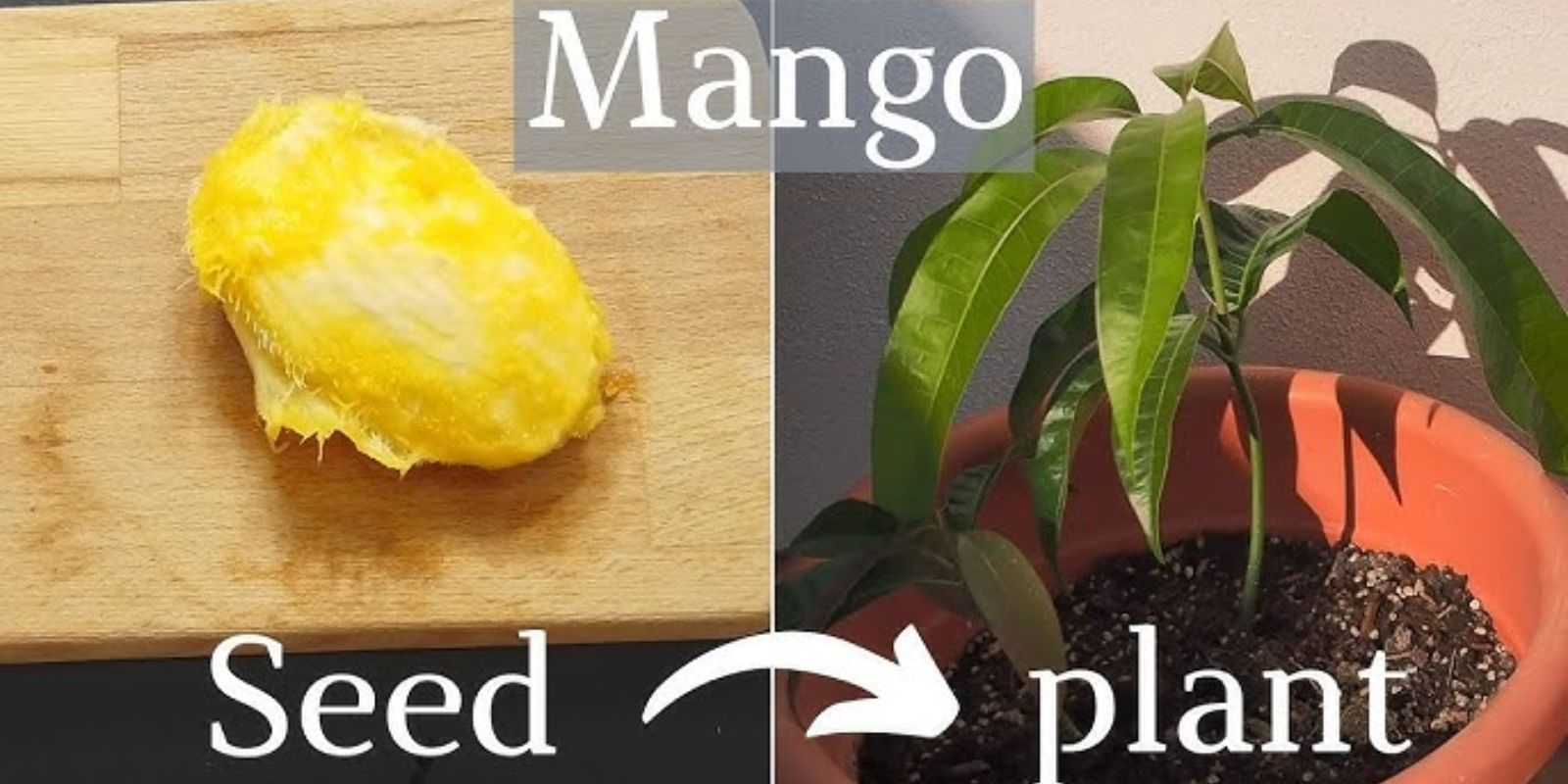Planting a mango seed and growing it into a thriving tree in a pot is not only a rewarding experience but also a fascinating journey from seed to tree. Whether you’re a beginner gardener or a seasoned enthusiast, this guide will walk you through each step to ensure success in your mango-growing endeavor.
Why Grow Mangoes in Pots?
Mangoes are tropical trees that can be adapted to grow in containers. Cultivating a mango tree in a pot is ideal for those with limited space or in colder climates where outdoor planting isn’t feasible. Besides the possibility of yielding delicious fruit, potted mango trees add an exotic touch to your garden or home.
Step 1: Selecting and Preparing the Mango Seed
Choose the Right Mango
Start with a healthy, ripe mango. The variety doesn’t matter much for beginners, but popular types like Alphonso, Kent, or Ataulfo are good options. Once you’ve enjoyed the fruit, you’ll find a large husk inside.
Clean the Seed
- Scrape off all the remaining pulp using a knife or your hands.
- Rinse the husk under running water to remove residue that may hinder germination.
Extract the Seed from the Husk
- Carefully crack open the husk with a knife or pliers to reveal the inner seed. Be gentle to avoid damaging the seed.
- The seed inside will look like a large bean or lima bean.
Pre-Germinate the Seed
- Wrap the seed in a damp paper towel.
- Place it in a resealable plastic bag and keep it in a warm, dark place, like on top of your refrigerator.
- Check the seed every 2-3 days to ensure the paper towel remains moist.
- Within 1-2 weeks, you should see the seed begin to sprout with a small root or shoot.
Step 2: Choosing the Right Pot and Soil
Pick the Perfect Pot
- Select a pot that is at least 12 inches deep and wide, as mango trees need room for their roots.
- Ensure the pot has good drainage holes to prevent waterlogging, which can cause root rot.
Prepare the Soil
- Use a nutrient-rich, well-draining soil mix. A blend of garden soil, compost, and sand works well.
- Mango trees prefer slightly acidic to neutral soil (pH 5.5-7.5).
Step 3: Planting the Seed
Position the Seed
- Fill the pot with soil, leaving about 2-3 inches from the top.
- Plant the seed with the sprout pointing upward. If no sprout is visible, place the seed flat, with the convex side up.
- Cover the seed lightly with soil, leaving the top part exposed.
Watering
- Water the soil gently to keep it moist but not soggy. Overwatering can drown the seed.
- Use a spray bottle or watering can with a fine nozzle to avoid displacing the soil.
Step 4: Provide the Right Environment
Light
Mango trees thrive in bright, direct sunlight. Place your pot in a location where it gets at least 6-8 hours of sunlight daily.
Temperature
Mangoes are tropical plants and prefer warm temperatures. If you live in a cooler climate, keep the plant indoors near a sunny window during colder months.
Step 5: Ongoing Care
Watering Routine
- Allow the topsoil to dry out slightly between waterings.
- Reduce watering during colder months when the tree’s growth slows.
Fertilizing
- Feed your mango tree with a balanced, slow-release fertilizer every 4-6 weeks during the growing season (spring and summer).
- Organic options like compost or liquid seaweed fertilizers also work well.
Pruning
- Prune the tree lightly to maintain its shape and remove dead or weak branches.
- Regular pruning encourages better airflow and healthier growth.
Step 6: Transplanting (Optional)
When to Transplant
As your mango tree grows, it may outgrow its pot. Transfer it to a larger container every 2-3 years or plant it outdoors if the climate allows.
How to Transplant
- Gently remove the tree from its pot, keeping the root ball intact.
- Place it in a larger pot with fresh soil or dig a hole in the ground in a sunny, well-drained spot.
Step 7: Troubleshooting Common Problems
Yellowing Leaves
- This may indicate overwatering or poor drainage. Adjust watering habits and check the soil.
Slow Growth
- Ensure your tree gets enough sunlight and nutrients. Consider adding a fertilizer boost.
Pests
- Watch for common pests like aphids or mealybugs. Treat infestations with neem oil or insecticidal soap.
When Will It Bear Fruit?
Growing a mango tree from seed requires patience. Most mango trees grown in pots may take 5-8 years to bear fruit. However, even without fruit, the tree makes for a beautiful, lush addition to your garden.
Benefits of Growing Mangoes in Pots
- Space-Saving: Perfect for urban gardeners or those with limited space.
- Aesthetic Appeal: A tropical plant adds greenery and charm to any area.
- Organic Produce: Enjoy pesticide-free mangoes right at home.
Final Thoughts
Growing a mango tree in a pot is a delightful and rewarding experience. From the joy of planting the seed to watching it sprout and grow, every step is an opportunity to connect with nature. With proper care and patience, you’ll have a beautiful mango tree, and perhaps one day, it will reward you with delicious, homegrown fruit.
So, grab a mango, save the seed, and start your tropical gardening adventure today!
#GrowMangoAtHome #TropicalGardening #PottedFruitTrees #DIYGardening #MangoTreeJourney #UrbanGardening

